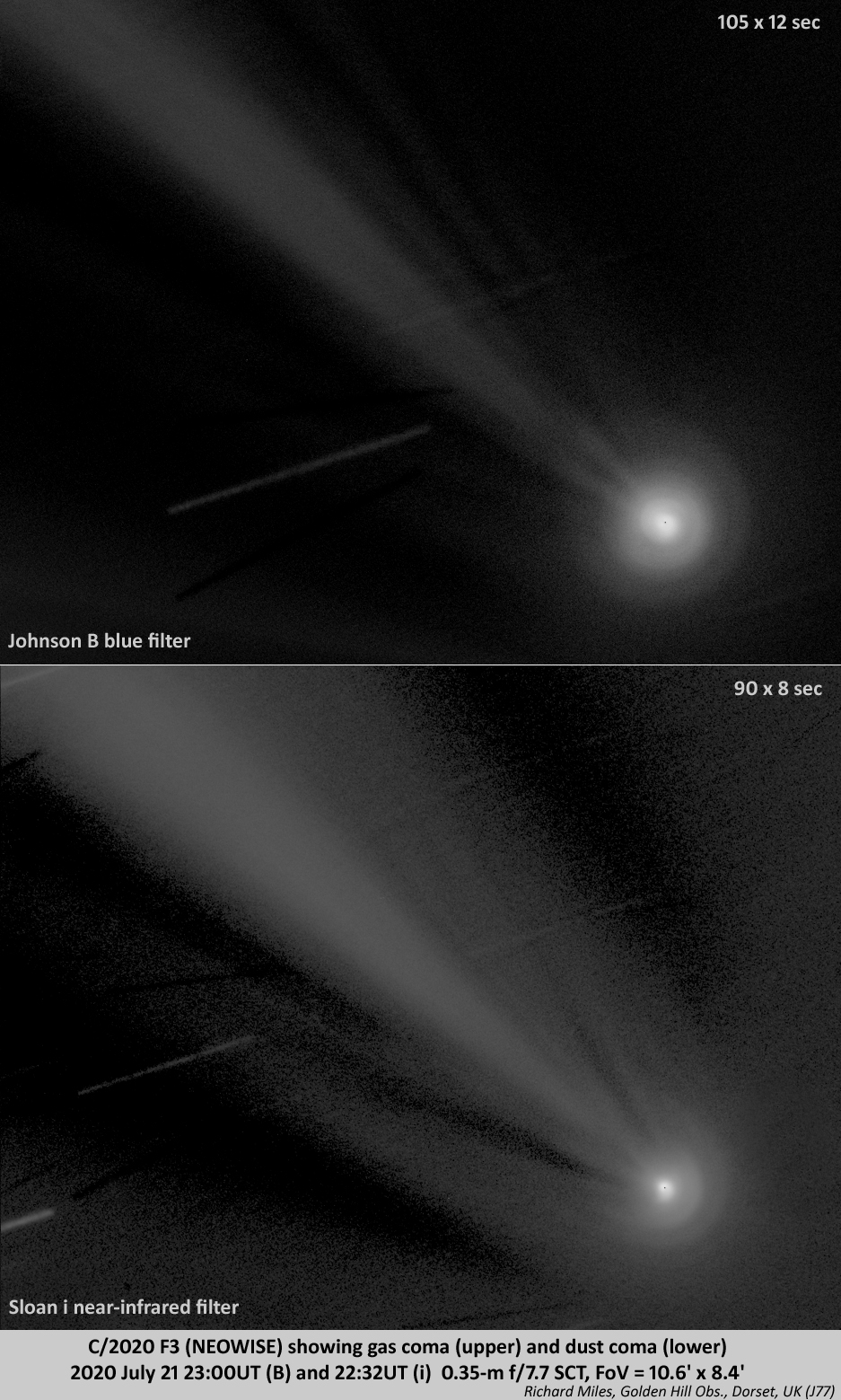Imaging with two filters, a B filter having a passband of 370-510 nm and a Sloan i passing 700-850 nm allows a comparison of the dust and gas in the inner coma. The two images from observations made last night, which have been subjected to the same Larson-Sekanina processing, are remarkably different in several aspects. The dust image shows a short spiralling jet beginning somewhere around p.a. 0° and spiralling anticlockwise through an angle of about 210°. The same feature in the gas coma appears to move outwards about 2x faster than the dust one and spirals anticlockwise more than 400°. Notice also the two prominent tails that emanate from either side of the pseudonucleus, whereas the dust is a much more mixed feature. The dust envelopes are at different distances from the nucleus than the gas ones. Also the dust envelopes are sort of parabolic in shape whereas the gas are generally circular centred on the nucleus. This circular symmetry extends much further outwards than shown here when seen in the ordinary light image At a solar elongation of 35°, phase angle of 103° and a distance from Earth of 0.69au, we are having a favourable apparition of Comet NEOWISE. That we see distinct spirals in the inner coma means that we must be seeing the nucleus relatively close to 'pole-on' and that there is one active region on the nucleus that is producing a large fraction of the outflowing material in a continuous fashion lasting perhaps many days. |

Page last updated: Thu 11 Jul 00:22:19 BST 2024